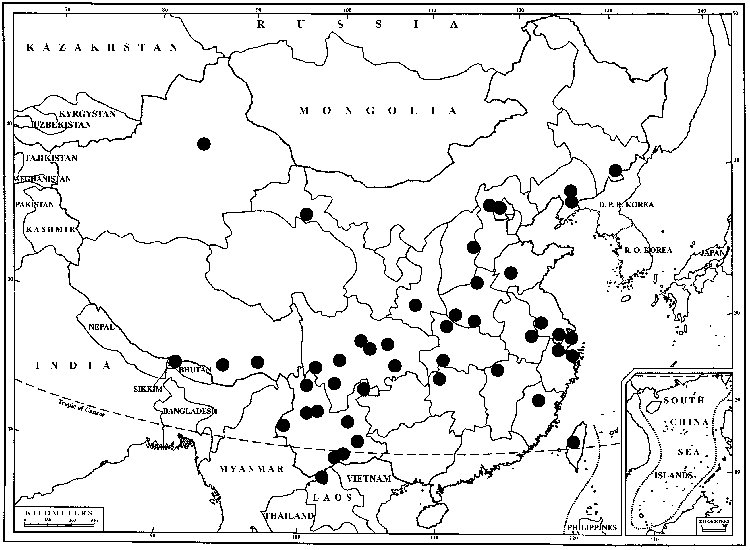Barbula unguiculata
Sp. Musc. Frond., 118. 1801,.
Stems 1–2 cm. Leaves firm when wet, long-ligulate to broadly lanceolate from an oblong base, 1–2.5 mm, base often oblong and widened, not strongly sheathing, margins recurved in the proximal 1/2–2/3, rarely to near apex or plane, apex broadly acute to rounded; costa excurrent as a short or long mucro, seldom muticous, abaxial costal surface with scattered solid papillae, hydroids present; distal laminal cells firm-walled, quadrate, 8–12 µm wide, 1:1, papillose. Specialized asexual reproduction absent. Perichaetial leaves weakly differentiated. Seta 1–2.5 cm. Theca 1–2.5 mm. Spores 8–11 µm.
Phenology: Capsules mature in winter and early spring, occasionally summer or fall.
Habitat: Soil, sand, gravel, sandstone, granite, limestone, walls, roadcuts, paths, lawns, ditches
Elevation: low to high elevations (50-2700 m)
Distribution

Alta., B.C., N.B., Nfld. and Labr. (Nfld.), N.W.T., N.S., Ont., P.E.I., Que., Sask., Yukon, Ala., Alaska, Ariz., Ark., Calif., Colo., Conn., Del., D.C., Fla., Ga., Idaho, Ill., Ind., Iowa, Kans., Ky., La., Maine, Md., Mass., Mich., Minn., Miss., Mo., Mont., Nebr., N.J., N.Mex., N.Y., N.C., N.Dak., Ohio, Okla., Pa., R.I., S.Dak., Tenn., Tex., Utah, Vt., Va., Wash., W.Va., Wis., Wyo., Mexico, Central America, South America, Europe, Asia, n Africa, Australia.
Discussion
Barbula unguiculata is common in eastern North America and Europe, and elsewhere in the North and South Temperate zones, but rare in the tropics and the Arctic, with, for instance, only two known sites in Mexico and a single one north of the Arctic tree line. The leaves are often blackened. Forms with strongly mucronate leaf apices have been referred to var. apiculata though modern authorities generally treat this as a form. Barbula indica is often confused with this species, but differs immediately in the leaves conduplicate but not contorted when dry, with plane or weakly recurved margins, and prorate abaxial surface of the costa. Barbula convoluta is similar but has plane margins, costa not excurrent as a mucro and seta yellow rather than reddish brown.
Selected References
None.